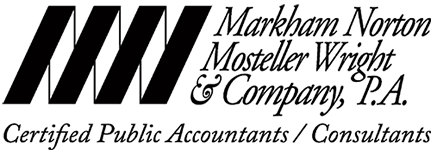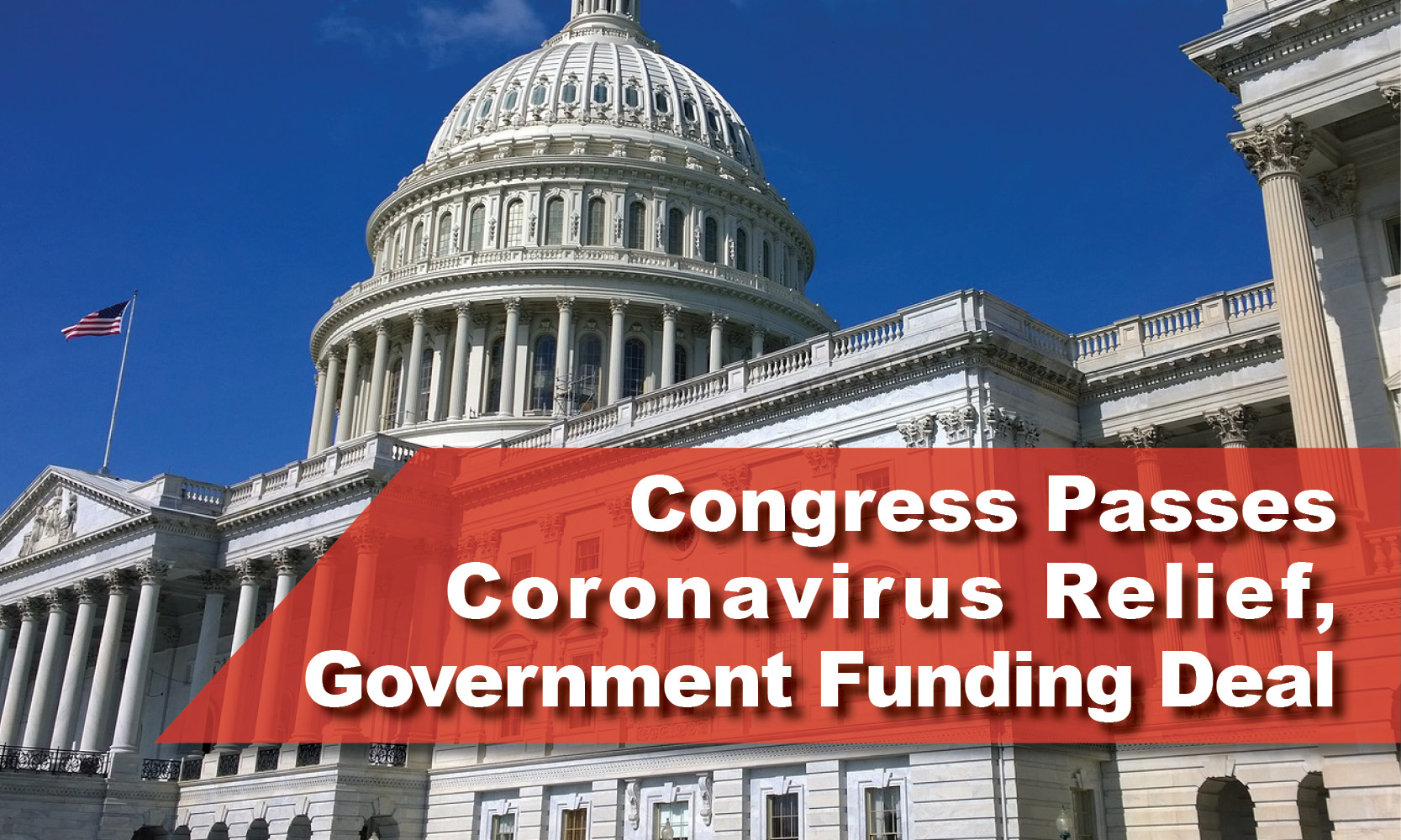Congress Passes Coronavirus Relief, Government Funding Deal
On December 21, 2020, Congress passed the Coronavirus Relief Bill that President Trump is expected to sign in the coming days. As we wait for the approval of this Bill, MNMW would like to share some of the key points from the H.R. 133 Bill Summary of COVID-19 Relief Provisions:
Section 276. Clarification of tax treatment of Paycheck Protection Program loans
The provision clarifies that gross income does not include any amount that would otherwise arise from the forgiveness of a Paycheck Protection Program (PPP) loan. This provision also clarifies that deductions are allowed for otherwise deductible expenses paid with the proceeds of a PPP loan that is forgiven, and that the tax basis and other attributes of the borrower’s assets will not be reduced as a result of the loan forgiveness. The provision is effective as of the date of enactment of the CARES Act. The provision provides similar treatment for Second Draw PPP loans, effective for tax years ending after the date of enactment of the provision.
Section 278. Clarification of tax treatment of certain loan forgiveness and other business financial assistance under the coronavirus relief legislation
The provision clarifies that gross income does not include forgiveness of certain loans, emergency EIDL grants, and certain loan repayment assistance, each as provided by the CARES Act. The provision also clarifies that deductions are allowed for otherwise deductible expenses paid with the amounts not included in income by this section, and that tax basis and other attributes will not be reduced as a result of those amounts being excluded from gross income. The provision is effective for tax years ending after date of enactment of the CARES Act. The provision provides similar treatment for Targeted EIDL advances and Grants for Shuttered Venue Operators, effective for tax years ending after the date of enactment of the provision.
Section 279. Authority to waive certain information reporting requirements
The provision gives Treasury authority to waive information filing requirements for any amount excluded from income by reason of the exclusion of covered loan amount forgiveness from taxable income, the exclusion of emergency financial aid grants from taxable income or the exclusion of certain loan forgiveness and other business financial assistance under the CARES act from income.
Section 304: Additional Eligible Expenses
Makes the following expenses allowable and forgivable uses for Paycheck Protection Program funds:
- Covered operations expenditures. Payment for any software, cloud computing, and other human resources and accounting needs.
- Covered property damage costs. Costs related to property damage due to public disturbances that occurred during 2020 that are not covered by insurance.
- Covered supplier costs. Expenditures to a supplier pursuant to a contract, purchase order, or order for goods in effect prior to taking out the loan that are essential to the recipient’s operations at the time at which the expenditure was made. Supplier costs of perishable goods can be made before or during the life of the loan.
- Covered worker protection expenditure. Personal protective equipment and adaptive investments to help a loan recipient comply with federal health and safety guidelines or any equivalent State and local guidance related to COVID-19 during the period between March 1, 2020, and the end of the national emergency declaration.
Redesignates Section 1106 of the CARES Act and other subsequent conforming amendments as section 7A. This would transfer section 104 of this title to the end of section 7 of the Small Business Act (15 U.S.C. 631 et seq.). Relevant sections to follow contain this technical redesignation.
Allows loans made under PPP before, on, or after the enactment of this act to be eligible to utilize the expanded forgivable expenses except for borrowers who have already had their loans forgiven.
Section 306: Selection of Covered Period for Forgiveness
Allows the borrower to elect a covered period ending at the point of the borrower’s choosing between 8 and 24 weeks after origination.
Section 307: Simplified Application
Creates a simplified application process for loans under $150,000.
Section 310: Clarification of and Additional Limitations on Eligibility
- Clarifies that a business or organization that was not in operation on February 15, 2020 shall not be eligible for an initial PPP loan and a second draw PPP loan.
- Prohibits eligible entities that receive a grant under the Shuttered Venue Operator Grants from obtaining a PPP loan.
Section 311: Paycheck Protection Program Second Draw Loans
Creates a second loan from the Paycheck Protection Program, called a “PPP second draw” loan for smaller and harder-hit businesses, with a maximum amount of $2 million.
Eligibility. In order to receive a Paycheck Protection Program loan under this section, eligible entities must:
- Employ not more than 300 employees;
- Have used or will use the full amount of their first PPP; and
- Demonstrate at least a 25 percent reduction in gross receipts in the first, second, or third quarter of 2020 relative to the same 2019 quarter. Provides applicable timelines for businesses that were not in operation in Q1, Q2, and Q3, and Q4 of 2019. Applications submitted on or after January 1, 2021 are eligible to utilize the gross receipts from the fourth quarter of 2020.
Eligible entities must be businesses, certain non-profit organizations, housing cooperatives, veterans’ organizations, tribal businesses, self-employed individuals, sole proprietors, independent contractors, and small agricultural co-operatives.
Ineligible entities include: entities listed in 13 C.F.R. 120.110 and subsequent regulations except for entities from that regulation which have otherwise been made eligible by statute or guidance, and except for nonprofits and religious organizations; entities involved in political and lobbying activities including engaging in advocacy in areas such as public policy or political strategy or otherwise describes itself as a think tank in any public document, entities affiliated with entities in the People’s Republic of China; registrants under the Foreign Agents Registration Act; and entities that receive a grant under the Shuttered Venue Operator Grant program.
Loan Terms
- In general, borrowers may receive a loan amount of up to 2.5X the average monthly payroll costs in the one year prior to the loan or the calendar year. No loan can be greater than $2 million.
- Entities in industries assigned to NAICS code 72 (Accommodation and Food Services) may receive loans of up to 3.5X average monthly payroll costs.
Loan Forgiveness – Borrowers of a PPP second draw loan would be eligible for loan forgiveness equal to the sum of their payroll costs, as well as covered mortgage, rent, and utility payments, covered operations expenditures, covered property damage costs, covered supplier costs, and covered worker protection expenditures incurred during the covered period. The 60/40 cost allocation between payroll and non-payroll costs in order to receive full forgiveness will continue to apply.
Application of Exemption Based on Employee – Extends existing safe harbors on restoring FTE and salaries and wages. Specifically, applies the rule of reducing loan forgiveness for the borrower reducing the number of employees retained and reducing employees’ salaries in excess of 25 percent. Allows the SBA and Treasury Department to jointly modify any date in section 7A(d) consistent with the purposes of the Paycheck Protection Program.
Section 312: Increased Ability for Paycheck Protection Program Borrowers to Request an Increase in Loan Amount Due to Updated Regulations
Requires the Administrator to release guidance to lenders within 17 days of enactment that allows borrowers who returned all or part of their PPP loan to reapply for the maximum amount applicable so long that they have not received forgiveness. Additionally, this section allows borrowers whose loan calculations have increased due to changes in interim final rules to work with lenders to modify their loan value regardless of whether the loan has been fully disbursed, or if Form 1502 has already been submitted.
Section 333: Repeal of EIDL Advance Deduction
- Repeals section 1110(e)(6) of the CARES Act, which requires PPP borrowers to deduct the amount of their EIDL advance from their PPP forgiveness amount.
- Establishes the Sense of Congress that EIDL Advance borrowers should be made whole without regard to whether those borrowers are eligible for PPP forgiveness
- The Administrator shall issue rules that ensure borrowers are made whole if they received forgiveness and their EIDL was deducted from that amount.
Section 343: Covered Period for New PPP Loans
- Extends the covered period for all PPP loans through March 31, 2021.
- Applies to loans made before, on, or after the date of enactment, including the forgiveness of such loan.
Section 344: Covered Period for Other Purposes
Clarifies the applicable period for employee’s salaries of $100,000 on an annualized basis as prorated during the period in which compensation is paid or incurred.
___________________________________________
Our team at MNMW is working constantly to bring you the most recent news and updates related to the COVID-19 crisis that could impact you and your loved ones.
For more information you can visit our MNMW Coronavirus (Covid-19) Resource page with the button below or call in at (239) 433-5554.


